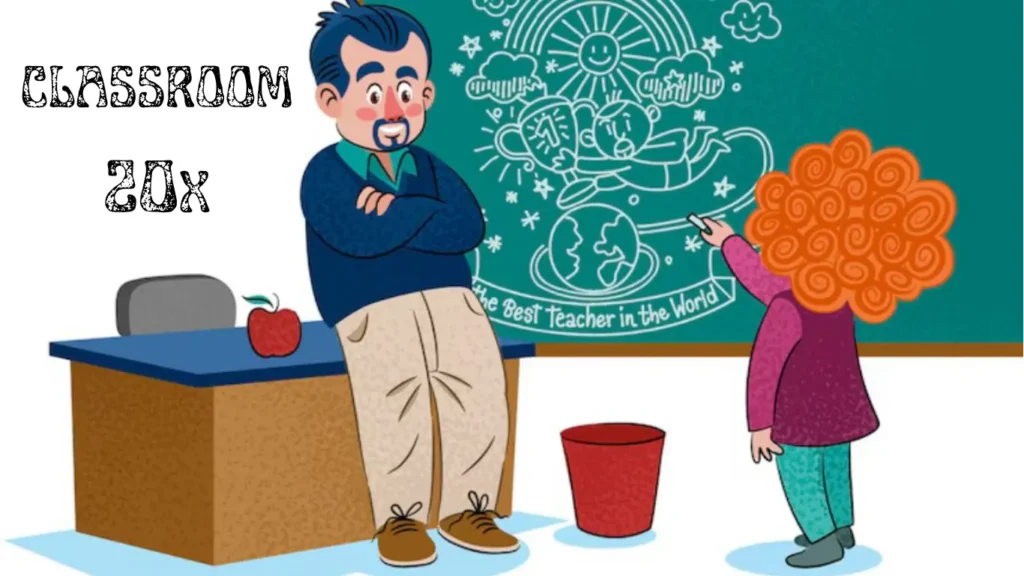Imagine walking into a classroom that feels more like a startup co-working space than a traditional school. No rows of desks. No chalkboard. Just a dynamic, tech-infused environment buzzing with creativity and curiosity. Welcome to Classroom 20x — the future of education, unfolding now.
What Is Classroom 20x?
If you’re searching for “Classroom 20x,” you’re likely curious about how education is evolving — and how these changes will impact students, teachers, and even parents. You want answers, insights, and perhaps even inspiration. Let’s dive right into it.
Classroom 20x is not just a catchy name. It’s a paradigm shift in how learning is delivered and experienced. Combining AI-powered tools, immersive technology, student-centered pedagogy, and real-world problem solving, this model transforms passive learning into an active, personalized journey.
From Chalkboards to Chatbots: A Quick Evolution
Let’s take a step back. Traditional classrooms were designed in the Industrial Age, where conformity and rote memorization reigned. But the world has changed — and fast.
- Smartboards replaced blackboards
- Laptops replaced notebooks
- ChatGPTs replaced textbook-only answers
Classroom 20x doesn’t just adapt to this shift; it anticipates what’s next.
Key Features of Classroom 20x
1. Hyper-Personalized Learning Paths
No two students learn the same way. Classroom 20x leverages machine learning to tailor content based on:
- Learning style
- Speed of comprehension
- Interests and career goals
Think of it as Netflix for education — smart algorithms suggest the right “learning episodes” at the right time.
2. Project-Based, Real-World Assignments
Instead of hypothetical tests, students tackle real issues:
- Designing sustainable housing prototypes
- Creating digital marketing campaigns for actual clients
- Collaborating globally on environmental data analysis
It’s not about memorizing facts anymore. It’s about applying them.
3. Immersive Tech: AR, VR & Beyond
Why just read about the pyramids when you can walk through them in VR?
- Augmented Reality (AR) overlays info on physical objects
- Virtual Reality (VR) provides simulated, hands-on experiences
- Mixed Reality (MR) blends the best of both worlds
These tools make abstract concepts tangible and unforgettable.
4. AI-Enhanced Feedback Loops
Gone are the days of waiting a week for graded papers. With AI:
- Essays are evaluated instantly with constructive feedback
- Students receive real-time suggestions for improvement
- Teachers can pinpoint learning gaps with surgical precision
5. Global Classrooms & Cultural Exchange
Classroom 20x breaks down walls — literally. Using platforms like Zoom, Slack, and Metaverse-based tools, students collaborate with peers across continents, learning cultural nuances alongside academic content.
Benefits for Stakeholders
For Students:
- Greater autonomy over their learning
- Deeper engagement and critical thinking
- Real skills for real-world success
For Teachers:
- Role shifts from “sage on the stage” to “guide on the side”
- AI reduces admin load, freeing time for creativity
- Richer insights into each learner’s progress
For Parents:
- Transparent progress tracking
- Active participation through dashboards and video feedback
- Confidence their children are future-ready
Challenges to Consider
No revolution comes without hurdles. Classroom 20x faces:
- Digital divide: Not all students have equal access to tech
- Privacy concerns: Data collection must be ethical and secure
- Training gaps: Teachers need upskilling to harness these tools fully
Real-World Example: The Finland Model
Finland, already a global leader in education, is piloting versions of Classroom 20x. They’ve integrated cross-subject learning, AI tutors, and flexible school hours. The result? Higher student satisfaction and performance.
Classroom 20x vs Traditional Model
| Feature | Traditional Classroom | Classroom 20x |
| Teaching Style | One-size-fits-all | Personalized & Adaptive |
| Curriculum | Static | Dynamic & Real-Time |
| Assessment | Periodic exams | Continuous feedback |
| Engagement | Passive | Interactive & Experiential |
How Can Schools Prepare?
- Invest in tech infrastructure
- Train educators in digital pedagogy
- Pilot small-scale Classroom 20x modules
- Engage students and parents in the transition process
FAQs About Classroom 20x
What does “Classroom 20x” mean?
It’s a futuristic, tech-forward model of education that replaces traditional classrooms with immersive, personalized, and AI-enhanced learning environments.
Is Classroom 20x expensive to implement?
Initial setup costs can be high, but long-term benefits and tech scalability can offset expenses.
Will teachers be replaced by AI?
No. AI supports teachers by automating repetitive tasks, enabling them to focus on mentorship and creativity.
Can this work in public schools?
Yes, with phased integration, government support, and inclusive policies.
Final Thoughts
Education isn’t about stuffing young minds with information anymore. It’s about equipping them with tools to navigate an ever-changing world. Classroom 20x isn’t just a glimpse into the future; it’s the blueprint of a better present.
So, whether you’re an educator, parent, or student, now’s the time to lean into the shift. The future of learning is here. Are you ready?



